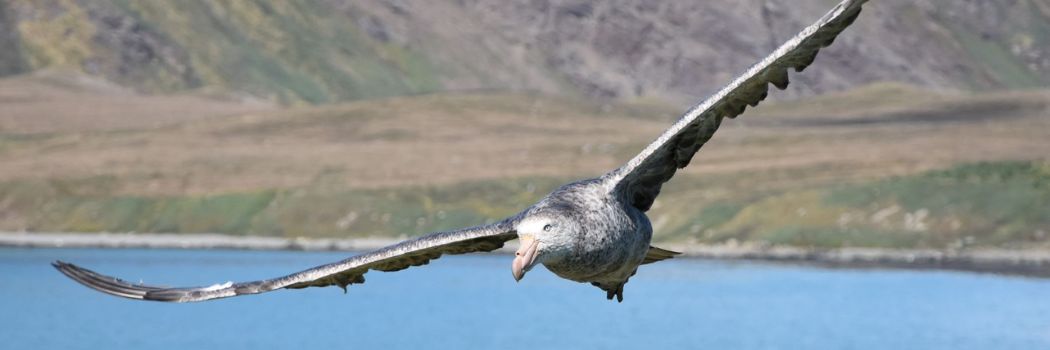Antarctica’s receding sea ice could impact seabirds’ food supply

Antarctica’s rapidly receding sea ice could have a negative impact on the food supply of seabirds that breed hundreds of miles away from the continent.
Most of the world's albatrosses, and their close relatives, petrels, breed on islands in the Southern Ocean, which surrounds Antarctica.
Antarctic seasonal sea ice zone
Researchers in our Geography department, and the British Antarctic Survey (BAS), used satellite technology to track the movement of these seabirds.
They found that the birds fly huge distances to parts of the ocean affected by sea ice – called the Antarctic seasonal sea ice zone.
It’s thought they travel to either feed in the nutrient enriched waters left behind when Antarctica’s sea ice melts each summer or, in the case of southern giant petrels, to scavenge on seals found on the ice itself.
Antarctica’s receding sea ice, driven by climate change, could affect not just the penguins, familiar to many people, that breed on the continent, but also huge numbers of seabirds breeding hundreds or thousands of miles away.
The researchers analysed data showing the movements of seven species of albatross and large petrel from the sub-Antarctic island of South Georgia, which is about 1,000 miles from Antarctica.
These species were the northern giant petrel, southern giant petrel, white-chinned petrel, light-mantled albatross, black-browed albatross, grey-headed albatross and the wandering albatross.
In total they looked at 2,497 foraging trips made by 1,289 of the seabirds from satellite data collected between 1992 and 2023.
Our European Research Council (ERC) grant is using snow petrels to understand modern and past sea ice conditions, including fitting trackers to snow petrels to understand where they go. Snow petrels are known to be strongly associated with sea ice, but it was unclear how other seabirds might behave. Using similar tracking data to our ERC work, we broadened our search to include albatrosses and large petrels. We showed that these seabirds also travel hundreds of miles and also interact with the area covered with sea ice.
Antarctica’s shrinking sea ice
Until recently, Antarctica had not suffered the big losses in sea ice seen in the Arctic, but over the past five years Antarctic sea ice has begun to recede at a quicker rate.
The findings suggest that Antarctica’s shrinking sea ice could force seabirds to travel further from their breeding grounds to find food or it could alter the patterns of where that food can be found.
In turn, this could also affect the ecosystems these birds are a part of.
Find out more
-
The research is published in the journal Progress in Oceanography.
-
It was led by Dr Ewan Wakefield and Professor Erin McClymont in Durham University’s Department of Geography, and Professor Richard Phillips of the British Antarctic Survey.
-
Our Department of Geography is ranked 16th in the QS World University Rankings by Subject 2024. Visit our Geography webpages for more information on our undergraduate and postgraduate programmes.
-
Discover more about our Reconstructing Antarctic Sea-ice Evolution Using a Novel Biological Archive (ANTSIE) project.
-
The research also included BirdLife International, the University of Barcelona, the University of Helsinki, Stony Brook University and the University of Coimbra.
-
The study was directly funded by the Leverhulme Trust and the European Research Council H2020 (ERC).
-
Other funding came from the Natural Environment Research Council (NERC), Darwin Plus, the National Science Foundation and the Government of South Georgia and the South Sandwich Islands (GSGSSI). The study also benefited from the strategic programme of the Marine and Environmental Sciences Centre (MARE), financed by the Foundation for Science and Technology (FCT) and represents a contribution to the Ecosystems component of the BAS Polar Science for Planet Earth Programme, funded by NERC.
Banner picture: A northern giant petrel. Credit: Professor Richard Phillips


/prod01/prodbucket01/media/durham-university/departments-/geography/Matt_Couchmann-3872X1296.JPG)